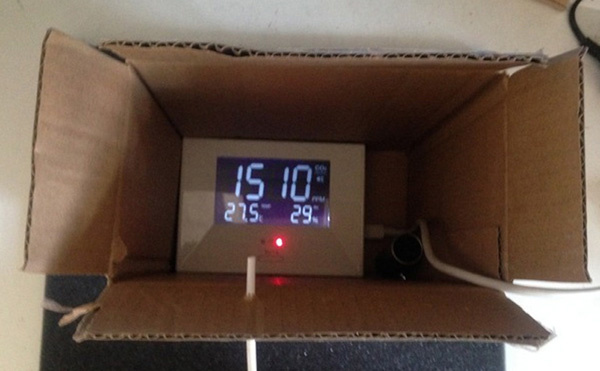Experiment on checking the readings of the Atmotube and the Air Quality Monitor depending on different concentrations of CO2

For the experiment, both devices were placed in a deep box. Then the box was closed, and carbon dioxide was started through the tube at the top of the box (the air exhaled). Since carbon dioxide is 1.6 times heavier than air, it settled and remained for some time at the bottom of the box, even when after this test the top cover was opened.
The air quality monitor directly captures the CO2 parameter, so it reacted to changes in concentration very quickly: in the normal state its readings were about 650ppm, in a gaseous environment - above 2500ppm (display Hi). The frequency of updating the readings - every 10 seconds.
Atmotube under the same conditions showed the following results: the air quality indicator VOC varied from about 0.4ppm under normal conditions to 1.1ppm under conditions of a strong concentration of carbon dioxide. The refresh rate is also every 10 seconds.
The same test, not in a box, but under normal room conditions, showed, respectively, a change from 600 to 1500 ppm (Air quality monitor) and from 0.35 to 0.6 ppm VOC (Atmotube).
The temperature and humidity readings on both instruments were almost identical in all modes.

Thus, the Atmotube's VOC performance does indeed depend on the freshness of the air, although the Atmotube does not have the ability to measure the CO2 concentration parameter and does not have a special sensor for this. You can learn more about the universal sensor in the Atmotube type CCS801 in this review article .
This sensor is capable of determining the concentration of aldehydes, aliphatic components, aromatics, terpenes, esters and alcohols, and carbon monoxide (CO). About the fact that this sensor is able to determine the concentration of carbon dioxide (CO2), is not declared.

Probably, a change in the concentration of CO2 somehow affects the concentration of CO and other gases to which the Atmotube sensor is sensitive. Of course, when breathing, in addition to CO2, other gases are released to which Atmotube can react. That is why the manufacturer states that it can be used as a source for VOCs is from humans. Please note that with this phrase the manufacturer does not state that the Atmotube is able to directly measure the concentration of CO2, but only states that the readings of the Atmotube (air quality parameter VOC) may depend on the concentration of carbon dioxide emitted by humans.
Thus, when promoting goods, it is not recommended to state that Atmotube measures CO2 concentration (this is not true), however, it can be stated that Atmotube responds to the stuffiness caused by a large number of people and can signal the need to ventilate the room.
All Articles